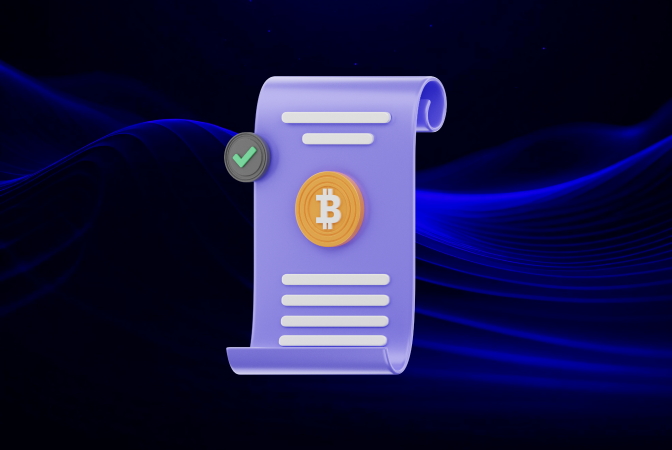SHARE THIS ARTICLE
Everything You Need to Know About Smart Contract Wallets

When Satoshi Nakamoto came up with the Whitepaper of a Peer-to-Peer decentralized currency in 2008, no one could have predicted the sheer market value of such a system.
The momentum was used by founders of Ethereum to launch a turing complete blockchain capable of not only acting as a store of transactions, but also providing features of a computational network. This changed the game, because now we had a potential for having a decentralized iteration of the internet, Web3.
However, along the way, a lot of complementary services developed. Primarily, wallets.
Here’s an oversimplification of how cryptocurrency wallets work.
A crypto ‘account’ has two major attributes. A public key and a private key.
A public key is what is used to receive as well as send coins. Think of it as QR code you scan or contact information you enter while using an application like Venmo or Google Pay. It is your publicly available point of contact on the chain.
A private key is more like a password. From a pure logic standpoint, it’s what allows you to tell the chain that you actually own the funds that you’re trying to send.
You only need to send a public key to receive funds. You need to enter a private key after the recipient’s public key to send funds.
On the basis of who has the custody of private keys between you and the wallet provider, there are two kinds of wallets:
-
Custodial Wallets: They’re usually offered by centralized exchange platforms like Coinbase and Binance. The idea is that the company is responsible for the privacy and protection of the user’s private keys. From the user’s standpoint, all they have to do is enter their necessary credentials to log in to the platform. When a user is trying to send funds, all they have to do is enter the public key of the recipient, and the company is responsible for entering the private key.
-
Non-Custodial Wallets: The user is responsible for managing and maintaining their own private and public keys.
What are Smart Contract Wallets?
Smart contract wallets are exactly what their name suggests. These wallets hold funds in a smart contract that is deployed on Ethereum.
Smart contracts are programmable, so they make it easier to create customized features, to a certain extent. They make features like social recovery, transfer limits and account freezing. Essentially combining the features of Externally Owned custodial and non-custodial wallets.
Some of the examples of features contained within a smart contract wallet include:
-
Approve Addresses: The user can approve certain addresses and mark them as safe to transact with.
-
Transfer Limits: The user can specify the amount of money allowed to be transferred within a time period, say amount X in one week.
-
Multisig Security: Trusted users within a network have to sign-off on transaction and the transaction only through if something like a majority consensus has been reached.
-
Bundle Transactions: Users can bundle transactions with DApps.
-
Account Freezing: Blocking new transactions in event of theft or misplacement.
-
Whitelisting: Users can select certain trusted addresses to send money.
The Need for Smart Contract Wallets.
The thing is, custodial and non-custodial wallets work. Until very recently, they were the industry norms.
That does not mean that they didn’t have their disadvantages.
Having a non-custodial wallet might sound great, from an individual point of view. The transactions are censorship resistant. You don’t have to rely on an institution to complete your transactions, despite having necessary funds. Sounds awesome.
However, that does mean increased responsibility on the users. The user is not only responsible for safeguarding their private keys on a medium impossible for others to access; the information has to be accessible when needed. If you’re reading this article, chances are you are already aware of how big of a problem misplacing or losing private keys is.
More importantly, crypto is basically a bearer asset, much like physical fiat currency. The person holding the cash is the owner of the cash and can therefore transact through the cash. The person holding the private key is the owner of the account and can therefore transact through the cryptocurrency held.
After reading this, maybe, to some of you, custodial wallets sound like a better idea. Allow me to break that bubble as well.
In theory, custodial wallets do sound like the solution for handling transactions on the chain. In theory. However, the idea behind cryptocurrency is lack of centralisation. When one institution holds so much power, that they can essentially prevent transactions for a huge chunk of population just by not providing their private key, that’s not really decentralized, is it? In practice, recently, during the Ukrainian conflict, certain governments prevented custodial wallets from completing their transactions. The Canadian government has even tried to freeze the assets of a group of supporters funding the trucker protest.
This is all not even accounting for hacks. Notable exchanges that have already been hacked before include Mt. Gox, QuadrigaCX, BTC-e and Bitstamp.
Smart contract wallets essentially provide both control over funds in a decentralized manner as well as safety and security. Smart contract wallets are the latest in the long line of complementary services offered, and it can be safely assumed that they’re here to stay.
Post Author

As a distinguished blockchain expert at Codezeros, Paritosh contributes to the company's growth by leveraging his expertise in the field. His forward-thinking mindset and deep industry knowledge position Codezeros at the forefront of blockchain advancements.



